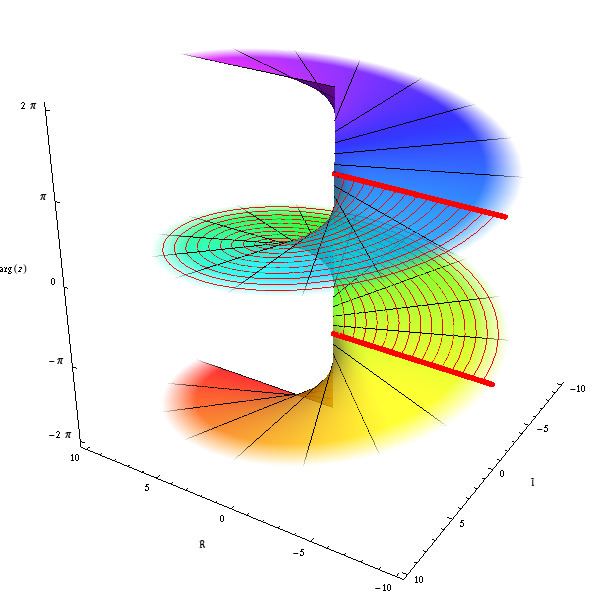 | ||
In mathematics, a principal branch is a function which selects one branch ("slice") of a multi-valued function. Most often, this applies to functions defined on the complex plane.
Contents
Trigonometric inverses
Principal branches are used in the definition of many inverse trigonometric functions, such as the selection either to define that
or that
Exponentiation to fractional powers
A more familiar principal branch function, limited to real numbers, is that of a positive real number raised to the power of 1/2.
For example, take the relation y = x1/2, where x is any positive real number.
This relation can be satisfied by any value of y equal to a square root of x (either positive or negative). By convention, √x is used to denote the positive square root of x.
In this instance, the positive square root function is taken as the principal branch of the multi-valued relation x1/2.
Complex logarithms
One way to view a principal branch is to look specifically at the exponential function, and the logarithm, as it is defined in complex analysis.
The exponential function is single-valued, where ez is defined as:
where
However, the periodic nature of the trigonometric functions involved makes it clear that the logarithm is not so uniquely determined. One way to see this is to look at the following:
and
where k is any integer and atan2 is arctangent with the appropriate sign correction.
Any number log z defined by such criteria has the property that elog z = z.
In this manner log function is a multi-valued function (often referred to as a "multifunction" in the context of complex analysis). A branch cut, usually along the negative real axis, can limit the imaginary part so it lies between −π and π. These are the chosen principal values.
This is the principal branch of the log function. Often it is defined using a capital letter, Log z.
